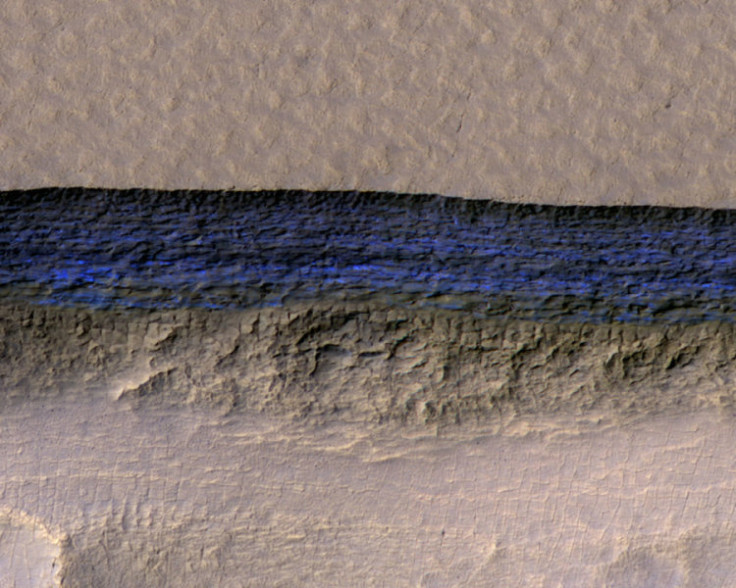Scientists discover huge water deposits on Mars that could sustain manned missions to the planet
Understanding water ice on Mars is key to unlocking the secrets of the Red Planet.

Scientists have uncovered multiple new sites on Mars which host huge water ice deposits, according to a new study published in the journal Science.
The sub-surface ice was detected by ground-penetrating radar instruments in the steep slopes of Martian cliffs which are gradually eroding, exposing more of their internal structure. The ice begins at around two metres below the surface and sometimes reaches more than 100 metres deep, the scientists say.
"The discovery reported today gives us surprising windows where we can see right into these thick underground sheets of ice," said Shane Byrne from the University of Arizona Lunar and Planetary Laboratory, Tucson, a co-author on today's report. "It's like having one of those ant farms where you can see through the glass on the side to learn about what's usually hidden beneath the ground."
Understanding water ice on Mars is key to unlocking the secrets of the Red Planet as it may preserve a record of the planet's climate history. This knowledge is also important in the search for potential signs of life.
In addition, any future exploration and settlement of Mars will rely on ice deposits such as these as a source of water. As well as being drinkable, water can also be used to create oxygen to breathe and can be combined with methane to create fuel.
Water ice was already known to be present in some places on Mars. However, scientists are still unsure over the extent of it, how thick it is and its purity, among other factors.
"Mars is cold and dry, with most of the H2O in the form of ice, and a little water vapour in the atmosphere," Colin Dundas, lead author of the study from the US Geological Survey's Astrogeology Science Center told IBTimes UK.
"The ice is concentrated in layered deposits at the poles, and also found in the shallow sub-surface at middle latitudes, as in our study. (We've previously known about shallow subsurface ice from multiple lines of evidence). The possibility of liquid water has been much discussed, but a recent paper that we published in November suggests that some of the leading candidates for liquid flow are actually granular flows," he said.
For the latest study, researchers used the Mars Reconnaissance Orbiter (MRO) to identify eight separate deposits of water ice on steep, pole-facing slopes. The sites are located in both hemispheres at lattitudes of around 55 to 58 degrees - equivalent to Scotland or the tip of South America on Earth.
The scientists say that the ice contains distinct layers, which could help to understand changes in the planet's climate over time. Furthermore, they think it has formed relatively recently, and is also far more extensive than what has been detected in the study.
"There is shallow ground ice under roughly a third of the Martian surface, which records the recent history of Mars," said Dundas. "What we've seen here are cross-sections through the ice that give us a 3-D view with more detail than ever before."
The eight sites are located at lattitudes which are far less-hostile than the polar ice caps, which could be crucial for future manned mission to the Red Planet. "Astronauts could essentially just go there with a bucket and a shovel and get all the water they need," Byrne said.





















